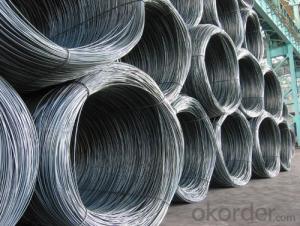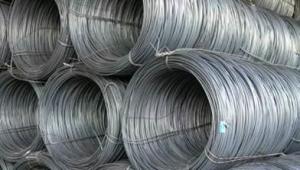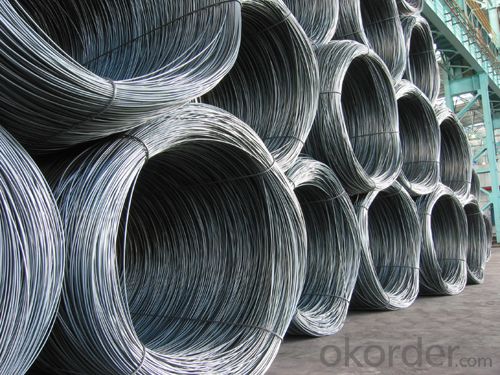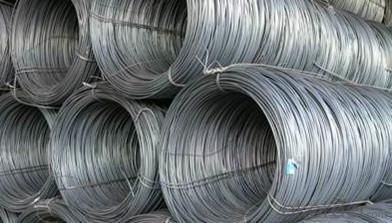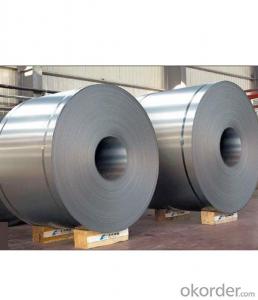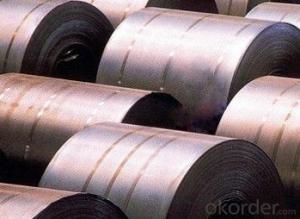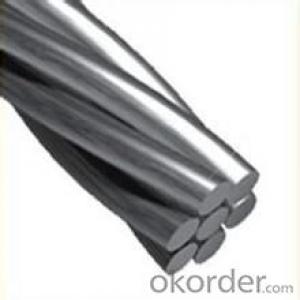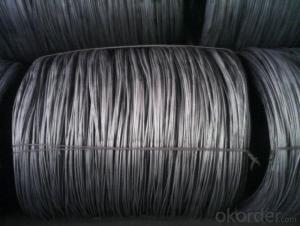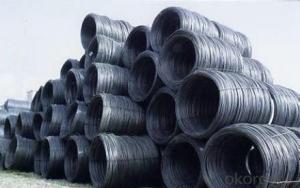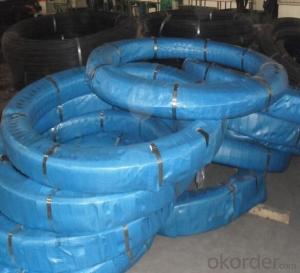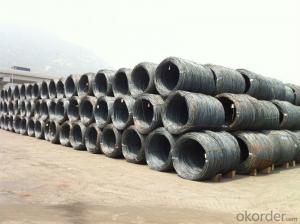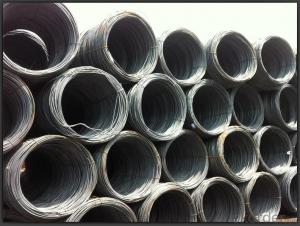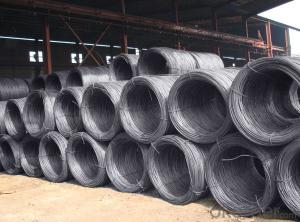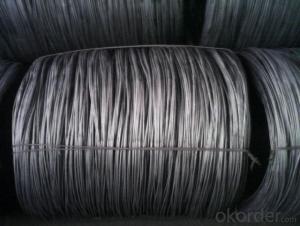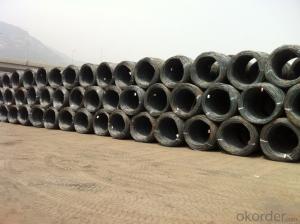Hot Rolled Steel Wire Rod with Good Quality with The Size 10mm
- Loading Port:
- Tianjin
- Payment Terms:
- TT OR LC
- Min Order Qty:
- 50 m.t.
- Supply Capability:
- 20000 m.t./month
OKorder Service Pledge
OKorder Financial Service
You Might Also Like
Hot Rolled Steel Wire Rod with Good Quality with The Size 10mm
Application: Carbon steel wire rod is widely used in construction and manufacturing. Carbon steel wire rod is mainly used for reinforcement of reinforced concrete and welded structure or reprocessed (roberts , nail, etc.) materials, especially used to produce wire drawing, welding electrode, nails, spring, electronic, precise machinery parts and so on.
Features:
Different Sizes: 5.5mm---16mm
Different Material Grade:SAE1006 SAE1008 SAE1010 SAE1012 etc
Packaging & Delivery of Wire Rod SAE1008B:
Packaging Detail: products are packed in coil and then shipped by container or bulk vessel
Each coil weight: 2-3MT
Delivery Detail: within 45 days after received deposit or LC.
Label: to be specified by customer, generally, each bundle has 1-2 labels
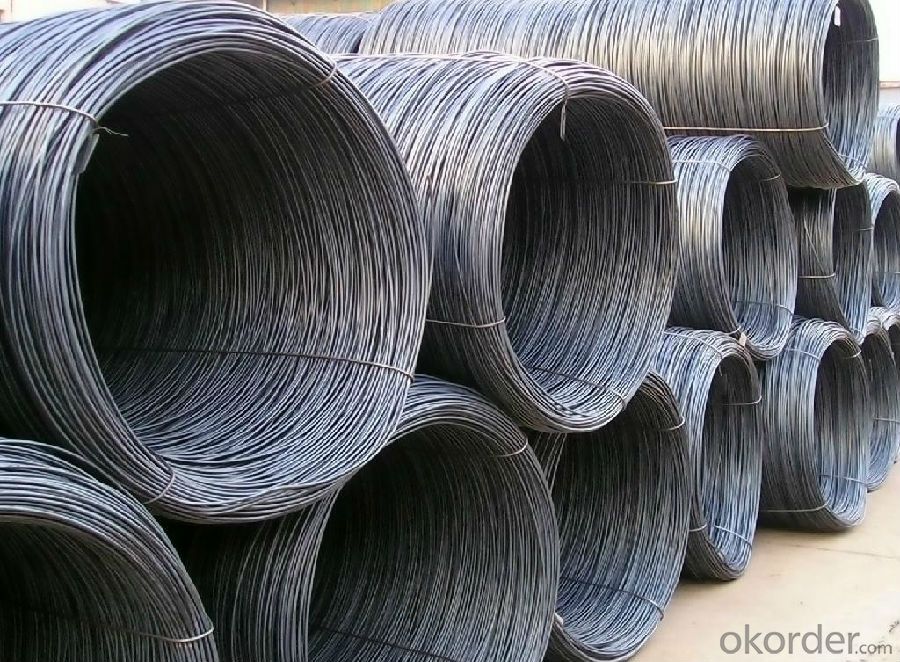
- Q: What are the main factors affecting the quality of steel wire rod?
- The quality of steel wire rod is influenced by several key factors. Firstly, the chemical composition of the steel is crucial. Impurities like sulfur and phosphorus can greatly impact the wire rod's strength, ductility, and overall quality. Therefore, it is essential to rigorously control the chemical composition to ensure high-quality steel wire rod. Secondly, the manufacturing process and the quality of raw materials used are important considerations. It is vital to carefully control the steelmaking process, from melting to casting, to prevent any contamination or defects that could weaken the wire rod. Additionally, the quality of raw materials, such as iron ore and scrap metal, also affects the final product. Using high-quality raw materials enhances the mechanical properties and overall quality of the wire rod. Thirdly, the heat treatment process plays a crucial role in determining the wire rod's quality. Proper heat treatment, involving controlled heating and cooling, significantly improves mechanical properties like tensile strength and hardness. It also reduces internal stresses and enhances the steel's microstructure, thereby improving overall quality. The surface quality of the wire rod is another important factor. Surface defects like cracks, scale, or unevenness can negatively impact performance. Therefore, it is necessary to prepare and inspect the surface properly to ensure a smooth and defect-free finish. Furthermore, the mechanical and physical properties of the steel wire rod greatly affect its quality. Factors like microstructure, grain size, and residual stresses influence properties like tensile strength, ductility, and toughness. Controlling and optimizing these factors during manufacturing is crucial to achieve the desired properties. Lastly, strict adherence to quality control measures throughout the production process is essential. Regular testing and inspection of raw materials, intermediate products, and final wire rod help detect any deviations or defects, allowing prompt corrective action. In conclusion, the quality of steel wire rod is influenced by factors such as chemical composition, manufacturing process, heat treatment, surface quality, mechanical and physical properties, and adherence to quality control measures. By carefully managing these factors, manufacturers can produce high-quality wire rod that meets specifications and performance requirements.
- Q: How is steel wire rod used in the manufacturing of automotive springs?
- Steel wire rod is commonly used in the manufacturing of automotive springs due to its high tensile strength and durability. It is first drawn into the desired thickness and then coiled to form the spring shape. The wire rod's strength allows the spring to withstand heavy loads and provide the necessary support and stability for the vehicle's suspension system. Additionally, its ability to resist deformation and maintain its shape over time ensures the longevity and reliability of the automotive springs.
- Q: How is steel wire rod stored and handled to prevent damage?
- Steel wire rod is typically stored and handled with great care to prevent any damage that could compromise its quality and performance. To ensure the integrity of the wire rod, several measures are typically taken. Firstly, steel wire rod is stored in a designated area that is clean, dry, and well-ventilated. This minimizes the risk of exposure to moisture, which can lead to corrosion and rusting. Additionally, the storage area should be away from any potential sources of damage such as heavy machinery, sharp objects, or chemicals that could cause surface abrasions or chemical reactions. To prevent any physical damage, steel wire rod is often stacked on pallets or racks to keep them off the ground and protect them from any potential impact or contamination. The stacking height should be limited to avoid excessive pressure on the lower layers, which could result in deformation or breakage. Furthermore, steel wire rod is typically bundled or coiled to provide additional protection during storage and transportation. Bundling helps to maintain the shape and integrity of the wire rod, preventing any bending or warping. Coiling, on the other hand, is commonly used for longer lengths of wire rod and provides better handling and storage options. During handling, personnel should be trained in safe lifting and transportation techniques to prevent any mishaps that could damage the wire rod. The use of appropriate lifting equipment, such as cranes or forklifts, is recommended to minimize the risk of dropping or mishandling the wire rod. Regular inspections should also be conducted to identify and address any signs of damage or deterioration, such as surface rust, dents, or deformations. Any damaged wire rod should be promptly removed from storage and replaced to prevent further deterioration or potential safety hazards. By following these storage and handling practices, steel wire rod can be effectively protected from damage, ensuring its quality and performance are maintained throughout its lifespan.
- Q: How is steel wire rod used in the production of wire mesh for automotive applications?
- Steel wire rod is a crucial component in the production of wire mesh for automotive applications. It serves as the raw material that is drawn into thinner wires, which are then woven or welded together to create the wire mesh. This mesh is used in various automotive applications such as reinforcing car seats, creating protective barriers, and forming sturdy grilles. The strength and durability of steel wire rod make it an ideal choice for manufacturing wire mesh, ensuring the safety and reliability of automotive components.
- Q: What are the potential risks and challenges in transporting steel wire rod?
- Transporting steel wire rod poses several potential risks and challenges that need to be carefully managed. Firstly, the weight and size of steel wire rods can make transportation difficult. These rods are typically heavy and long, which requires specialized equipment and vehicles for safe transportation. If not properly secured and handled, there is a risk of the rods shifting or falling during transit, potentially causing damage to the cargo, the transportation vehicle, or even posing a risk to other road users. Secondly, steel wire rods are prone to corrosion. Exposure to moisture, humidity, or harsh weather conditions can lead to rusting, which can compromise the quality and strength of the rods. It is essential to ensure that the rods are adequately protected during transportation to prevent moisture ingress and corrosion. Thirdly, the sharp ends of steel wire rods can pose a safety hazard. These rods often have sharp edges or protruding ends, which can cause injury to workers involved in handling or loading/unloading operations. Proper safety measures and protective gear should be implemented to prevent accidents and injuries. Additionally, transporting steel wire rods requires careful planning and coordination. These rods are often transported in large quantities, and their dimensions may require special permits or escorts. Routes and schedules need to be carefully planned to ensure timely delivery and avoid any legal or logistical issues. Lastly, theft and pilferage can be a significant concern when transporting valuable steel wire rods. Due to their high value, these rods may attract the attention of thieves or unauthorized individuals. Security measures, such as utilizing tracking devices, secured storage facilities, and conducting thorough background checks on personnel involved in the transportation process, should be implemented to mitigate the risk of theft. Overall, while transporting steel wire rods can be challenging due to their weight, size, and susceptibility to corrosion, by implementing appropriate safety measures, security protocols, and careful planning, these risks and challenges can be effectively managed to ensure the safe and timely delivery of the cargo.
- Q: How is steel wire rod cut to desired lengths?
- Steel wire rod is typically cut to desired lengths using various cutting methods such as shearing, sawing, or using specialized cutting machines. These methods involve applying force to the wire rod and carefully cutting it to the desired length using sharp blades or saw teeth. Some cutting machines may also use heat or lasers to cut through the steel wire rod. The cutting process ensures precise and accurate lengths as required for different applications.
- Q: What are the different types of steel wire rod surface defect prevention and mitigation measures?
- There are several types of steel wire rod surface defect prevention and mitigation measures including proper cleaning and maintenance of rollers, regular inspection for any signs of damage or wear, implementation of effective lubrication techniques, usage of high-quality raw materials, and adherence to strict quality control protocols throughout the manufacturing process. Additionally, proper storage and handling practices, such as avoiding exposure to moisture and contaminants, can also help prevent and mitigate surface defects in steel wire rods.
- Q: How are steel wire rods used in the production of wire ropes for elevators?
- Wire ropes for elevators require steel wire rods as a vital component. These rods are transformed into wire strands, which are then twisted together to create the wire ropes. To begin the process, steel wire rods are carefully chosen for their strength and durability. They then undergo a series of machines that draw them to the desired diameter and shape. This drawing process involves pulling the rods through dies, gradually reducing their size and increasing their length. Once the desired wire strand size is achieved, multiple strands are tightly twisted together to form a wire rope. The number of strands used and the twist direction can vary depending on elevator requirements. This twisting process is crucial as it provides the wire rope with strength, flexibility, and the ability to bear heavy loads. The steel wire rods' high tensile strength and resistance to wear and corrosion make them ideal for wire rope production. Additionally, their consistent quality ensures that the resulting wire ropes can withstand the demanding conditions in elevator applications. Overall, steel wire rods are indispensable in producing reliable and durable wire ropes for elevators. Their unique properties and versatility make them an excellent choice for constructing safe and efficient elevator operations.
- Q: What are the environmental considerations of steel wire rod production?
- The environmental considerations of steel wire rod production include the extraction of raw materials, such as iron ore and coal, which can lead to deforestation, habitat destruction, and air and water pollution. The manufacturing process itself generates greenhouse gas emissions, particularly during the energy-intensive process of converting iron ore into steel. The disposal of waste materials, such as slag and dust, also poses challenges in terms of proper handling and potential environmental contamination. Additionally, the transportation of raw materials and finished products contributes to carbon emissions and energy consumption.
- Q: What are the different annealing processes used for steel wire rod?
- The different annealing processes used for steel wire rod include full annealing, spheroidization annealing, and process annealing. Full annealing involves heating the wire rod to a temperature above its critical temperature and then slowly cooling it to room temperature to soften it and improve its ductility. Spheroidization annealing is a type of full annealing that is specifically used for high carbon steel wire rod to transform its brittle cementite structure into spherical carbides, enhancing its machinability and reducing the risk of breakage. Process annealing, on the other hand, is a partial annealing process that is performed on cold-worked wire rod to relieve internal stresses and restore some of its ductility without affecting its mechanical properties.
Send your message to us
Hot Rolled Steel Wire Rod with Good Quality with The Size 10mm
- Loading Port:
- Tianjin
- Payment Terms:
- TT OR LC
- Min Order Qty:
- 50 m.t.
- Supply Capability:
- 20000 m.t./month
OKorder Service Pledge
OKorder Financial Service
Similar products
Hot products
Hot Searches
Related keywords
